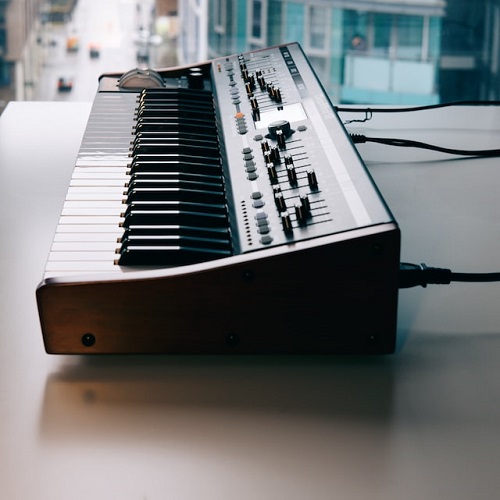Many musicians believe that synthesizers represent the pinnacle of musical creation. They offer endless possibilities for sound and composition, making them a favorite among producers and performers alike. While they can be complex machines to master, the rewards are well worth the effort. Yes, they can violate the laws of conventional music and create noises that are befitting of the space era, and that will transport you to another world entirely. If you're a fan of sci-fi, then you'll love what these innovative musicians can do with synthesizers.
Some synthesizers are controlled by a keyboard while others are not. The exceptions are typically found with lower-end models that have fewer features overall. Synthesizers that lack a keyboard often have other means of control, such as dials or buttons that allow the user to select different sounds. There are those who would argue that learning to program a synth is more valuable than learning how to play a keyboard. Whereas if you only know how to play the keyboard, you're limited to the sounds that the keyboard itself is capable of making.
By understanding how to properly use a keyboard, you will be able to get more out of your synth and unlock its true potential. However, if you're not interested in learning about keyboard functions, you can still operate the synth without any problems. In this article, we'll compare and contrast the piano and synthesizer. We'll argue that one doesn't need to know how to play the keyboard in order to master the synthesizer.
Differences Between A Synthesizer And A Piano
A synthesizer is a very different instrument to a piano, and you don't have to be a piano prodigy to play it. The piano is a string instrument that uses a series of hammers to produce music. When you press a key, the associated hammer strikes a string, producing the corresponding note. The strings are then struck by felt covered hammers, causing them to vibrate and produce sound. Keyboard instruments, such as pianos, are completely acoustic and can function without power. The music you hear is not synthesized; rather, it is the result of the steel, wood, and other components that go into making a piano. These materials work together to create the beautiful sound that we associate with these types of instruments.
In contrast, a synthesizer is an electronic instrument that creates new sounds by manipulating electrical impulses and frequencies. A variety of audio signals are synthesized and then filtered and processed to generate new sounds. This allows the user to create unique timbres and tones that would otherwise be impossible to produce. Keep in mind that sound is only represented by electricity. When audio is sent via a transducer like a speaker or headphones, the alternating current (analog audio) is transformed into sound waves, allowing us to "hear" it.
The discrepancy between a piano and synthesizer is the reason for their distinct sound. A piano uses physical objects to create sound, while a synthesizer uses electronic signals. In addition, synthesizers not only have the ability to create brand new sounds, but they can also imitate the sound of other instruments, such as pianos. Finally, another significant difference is the way they are used in today's music. Unlike the piano, which is a versatile harmonic instrument that may serve as the song's backbone, synthesizers are often reserved for creating unique souUnlike the piano, which is a versatile harmonic instrument that may serve as the song's backbone, synthesizers are often reserved for creating unique sounds, designing original music, writing catchy melodies, and providing other forms of auditory stimulation.
Playing Piano Vs. Playing A Synthesizer
Assuming the piano is in tune, we can produce a musical note by pushing down on a key on the keyboard, which then triggers the hammer of the corresponding key to hit the strings of the corresponding note. By just pushing the keys, we can play whatever melody we choose. As we push down on the keys with more force, the hammers strike them with more power and the notes begin to sound louder. The sustain pedal is used to keep the strings vibrating after the key is removed, while the dampening pedal muffles the sound of the strings. This allows us to create a wider range of sounds and dynamics while playing the piano.
Pianos are polyphonic instruments, which means that each note can be played independently of the others. In theory, this means that all notes on a piano can be played at the same time. However, in practice, it is usually only possible to play a few notes at once due to the limitations of human fingers. Keyboards are a great way to control and shape the sounds of a synthesizer. By pressing different keys, you can create different pitches and tones. You can also use the keyboard to control other aspects of the sound, such as volume, timbre, and effects.
Weighted keys, which mimic the feel of a traditional piano, sustain pedals, polyphony (albeit frequently limited to a few notes at a time), velocity (which replicates the force-volume connection of pianos), and other technologies have been created to assist make synthesizers seem like pianos. Though often operated using MIDI (Musical Instrument Digital Interface) data, synthesizers may also be controlled by other means such as voltages from triggers and gates. This allows for more versatility and creativity when crafting sounds. Although it is not required, it is useful for keyboard instrument players to have proficiency with synthesizers. This is because synthesizers can be operated through keyboards or other input devices.
What Is Sound Design?
Different contexts and purposes may benefit from well-designed sounds. A synthesizer, for instance, enables the creation of any sound, yet non-electronic instruments like the piano have a distinct tone. This shows that there are advantages to both types of sounds depending on what you're trying to achieve. You can make a synthesizer sound like whatever you want by manipulating its many components, including its oscillators, envelope generators, voices, filters, and LFO (low-frequency oscillator). By adjusting these features, you can create any sound you can imagine, from deep bass tones to high-pitched squeals.
To become an expert synthesizer player, one must first know how to traverse the different categories within the instrument. Those who can navigate the synthesizer easily are able to create any sound they want, making them more versatile and creative musicians.
Sequences & Arpeggios
Sequences can be played on synthesizers using prerecorded MIDI files. This is much more valuable than being able to play the piano well, as it allows for greater manipulation and control over the music. The process of playing a single note on a piano can sometimes be tedious. However, you can use an arpeggiator with a synthesizer to play a sequence of notes automatically, in time with a certain clock rate and note division. Then, simply pressing a single note, you may play chords, triads, or any other interval you desire. Therefore, if you want to achieve a certain sound, mastering the arpeggiator might be just as crucial as learning to play the piano.
Monophonic Vs. Polyphonic
Another important distinction between synthesizers and pianos is that synthesizers may be either monophonic or polyphonic. In other words, a monophonic synth is limited to playing a single note at any given time. The Moog Grandmother is an excellent example of a monophonic modular synthesizer, and it's capable of producing many of the classic synthesizer sounds that have been used on countless songs.
Monophonic synthesizers are commonly used to create the powerful bass lines that often form the backbone of top 10 songs. These instruments are capable of producing a wide range of sounds, from deep, thumping bass notes to higher-pitched melodies. Even so, polyphonic synthesizers have the ability to play many notes simultaneously. In pop music, for instance, they are often used as an accompanying instrument to thicken choruses and place a melody on top of a chord progression. This is done by playing two or more notes together at the same time, which creates a fuller sound. Additionally, drums can be used to keep the beat and add excitement to a song.
Conclusion
You may improve as a synthesizer player by expanding your musical horizons and studying new instruments. Gaining proficiency in synthesis and knowledge of how to program your instrument are necessities if you want to earn a life as a synth musician. Nonetheless, honing your keyboard skills will be valued even if you have no intention of making a living as a synth player.
Harlan Kilstein began playing piano during covid with no piano background at all. He taught himself how to play learning what to do and what not to do.
Today he's an advanced intermediate player and can help you grow in your skills because he learned all this on his own.








